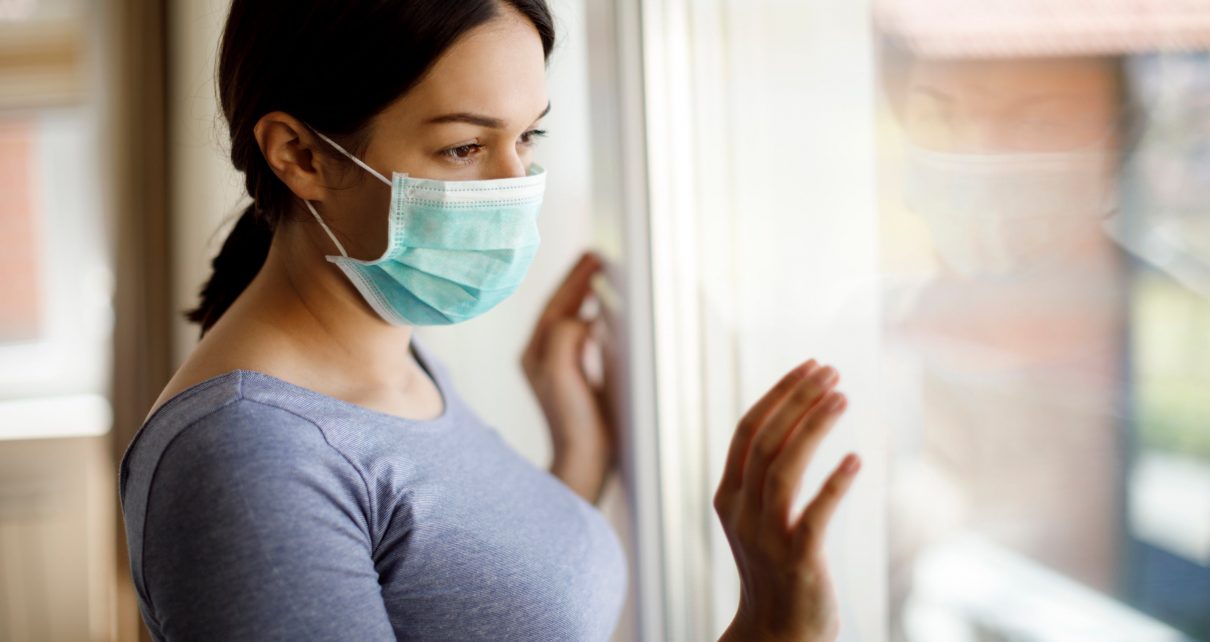The COVID-19 pandemic has impacted millions of Americans. As cities and states provide data on those directly ill, it has become clearer that communities of color carry an unequal burden of the disease. The emerging disparities have prompted community advocates to tailor prevention messages to the public in innovative ways.
Not long ago, however, in what felt like a desperate attempt to connect with people of color, U.S. Surgeon General Jerome Adams missed the mark during a speech to the nation. Aside from urging us to stay at home, wear masks and wash our hands regularly, the surgeon general told us to “avoid alcohol, tobacco and drugs.” He said, “We need you to do this, if not for yourself, for your abuela, do it for your granddaddy, do it for your big momma, do it for your pop pop…. We need you to step up and help stop the spread, so we can protect those who are most vulnerable.”
These words echo the belief central to maintaining injustice: individuals, not the system or our society, are entirely to blame for their behavior. It ignores the fact that the options available for staying healthy are constructed by a socioeconomic and racialized reality, where the choices are never as simple as working from home or physical distancing.
Adams’ words are a symptom of our society’s refusal to grapple with the active enslavement, segregation, exclusion, and exploitation of black, Latino and Asian people throughout history—a legacy that affects us to this day. Black and Latino individuals are far less likely to have a four-year college education than their white counterparts, equaling less opportunity for higher-paying positions. Compared to 8 percent of white residents, 25 percent and 19 percent of Latino and black New Yorkers, respectively, live below the federal poverty level, some in substandard living conditions. During this outbreak, people of color make up 75 percent of New York City’s frontline workers.
People from our communities have kept the city running in the midst of the pandemic as they continue to show up for essential jobs—grocery, public transit, warehouse and trucking, health care, childcare and building cleaning services. As we write this, two of us mourn the loss of family members to the virus and the consequences of rationing care. We continue to live with concern for our previously hospitalized relatives; and two of our fathers, who are building maintenance workers, continue to show up to work, risking exposure to our families when they come home each night. Yet the government at all levels has been slow to contain the spread of COVID-19 virus and prevent unnecessary deaths.
It is unsurprising that communities of color, whose blue-collar jobs are deemed essential and whose members cannot afford to stay at home, face the greatest burden of cases and deaths from the novel coronavirus in New York City and across much of the country, leading the Centers for Disease Control and Prevention to list minority groups as needing to take extra precautions.
The enormous health inequities that affect nonwhite individuals in the United States are no secret. Still the government at all levels has been slow to address decades-lasting structural inequities. Our country’s legacy of separating people on the basis of skin color continues to haunt neighborhoods that were built to be out of sight and out of mind. Redlining, where banks drew red lines on maps of areas in which they would not invest, was legal until 1939. But the stigma and impact it placed on communities as unfavorable areas for investments still lives on and contributes to the racialized poverty that black and Latino communities experience today. Housing discrimination determined the availability and quality of services like transportation, education, green spaces, grocery stores, employment, health care and retail in black and Latino communities.
For this reason, many communities of color are food deserts, are medically underserved, have underresourced schools, lack adequate access to retail services, and experience extreme heat and poor air quality. To magnify the problem, these communities have been aggressively targeted by marketing and availability of unhealthy products like fast food, tobacco and alcohol, making it difficult to follow the surgeon general’s directive, echoing the “just say no” campaigns of the 1980s, to simply refrain from using these products.
These structural barriers predetermine lifestyle and health, overriding individual choice in what to avoid in the face of the COVID-19 pandemic. Our society’s continued role in covert discrimination not only robs people of color of opportunities for wealth accumulation, it also robs us of the right to a long and healthy life. Our society continues to ignore the barriers put in front of minority communities and the unfortunate outcomes that result from them. As Ibraham X. Kendi writes in an essay about the lack of racial data during this pandemic, “If we can’t see racial disparities, then we can’t see the racist policies behind any disparities and deaths.”
Black people are two to three times more likely to die from asthma, and black children are more likely to die from asthma than white children, because governments tend to underregulate fracking in neighborhoods with greater populations of color. These inequities are exacerbated by COVID-19, which is a respiratory illness. More broadly, our communities of color suffer the highest rates of medical and nonmedical conditions associated with diabetes and heart disease, which appear to predispose people to serious coronavirus complications and death.
Despite having the most need, black and Latino New Yorkers make up over half of the city’s uninsured population and have reduced access to primary care providers. Even with access, many face significant language barriers and discrimination, impacting quality of care received. The Trump administration made its first recommendations on how to address the pandemic in mid-March, but did not provide any material for non-English speakers. It was not until days later that the CDC Web site posted non-English content.
In response, local organizations and community advocacy groups have stepped up for their constituents and developed language- and culturally appropriate material. Delayed action by the government, even if just days, has equated to thousands infected or lost. These barriers to quality care exacerbate mistrust in the medical system and the experts we see on national television. Given that trust in the establishment remains low and the inappropriate remarks made by those charged with keeping Americans safe, people of color are less likely to turn to our government for guidance during this pandemic.
We take this opportunity to remind federal, state, and local officials, that it is our government’s responsibility to “step up” to contain the COVID-19 pandemic, not that of people of color. As we do with our patients during clinical encounters, to build trust, our government officials must first listen. We then meet patients where they are and tailor our advice to their unique circumstance. In turn, we ask government officials to listen to community and religious leaders and amplify their culturally sensitive public health messages. We ask them to partner with communities that have used music and social media to connect with people of color to encourage preventive behaviors. We suggest that officials meet our communities where they are—on social media, on various language-specific radio and TV shows and news. They should collaborate with black, Latino, Asian, and Native American medical associations to identify experts of color who are addressing the COVID-19 pandemic (specialists in immunology and public health who have recently made the news come to mind).
Creating a more just society will take time and effort. If we do not begin now to use evidence-based messaging and interventions and leverage existing partnerships to truly connect and work with communities of color, the status quo will outlive this pandemic.
Read more about the coronavirus outbreak here.




